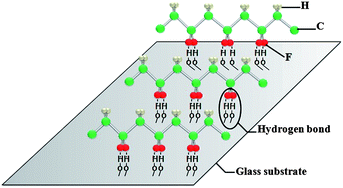Fabrication and dielectric properties of advanced high permittivity polyaniline/poly(vinylidene fluoride) nanohybrid films with high energy storage density
Abstract
Energy

* Corresponding authors
a
State Key Laboratory of Chemical Resource Engineering, Key Laboratory of Beijing City on Preparation and Processing of Novel Polymer Materials, Beijing University of Chemical Technology, Beijing, P. R. China
E-mail:
dangzm@mail.buct.edu.cn
b State Key Laboratory of Electrical Insulation and Power Equipment, Xi'an Jiaotong University, Xi'an, P. R. China
c Lab. MSSMAT, CNRS UMR 8579, Ecole Centrale de Paris, Grande Voie des Vignes, Châtenay Malabry Cedex, France
Energy

 Please wait while we load your content...
Something went wrong. Try again?
Please wait while we load your content...
Something went wrong. Try again?
J. Yuan, Z. Dang, S. Yao, J. Zha, T. Zhou, S. Li and J. Bai, J. Mater. Chem., 2010, 20, 2441 DOI: 10.1039/B923590F
To request permission to reproduce material from this article, please go to the Copyright Clearance Center request page.
If you are an author contributing to an RSC publication, you do not need to request permission provided correct acknowledgement is given.
If you are the author of this article, you do not need to request permission to reproduce figures and diagrams provided correct acknowledgement is given. If you want to reproduce the whole article in a third-party publication (excluding your thesis/dissertation for which permission is not required) please go to the Copyright Clearance Center request page.
Read more about how to correctly acknowledge RSC content.
 Fetching data from CrossRef.
Fetching data from CrossRef.
This may take some time to load.
Loading related content
